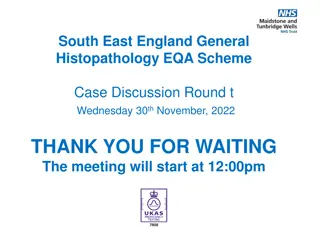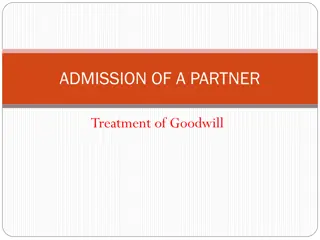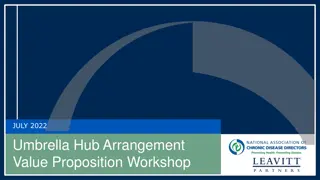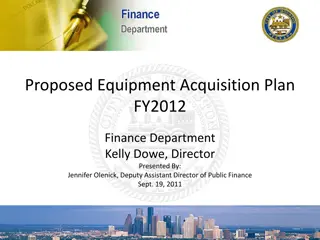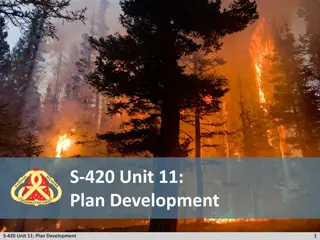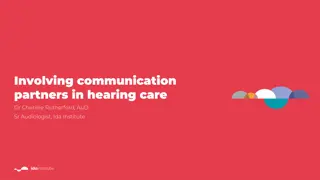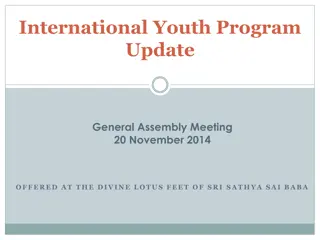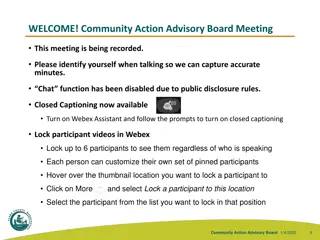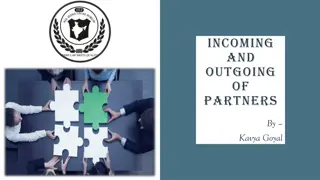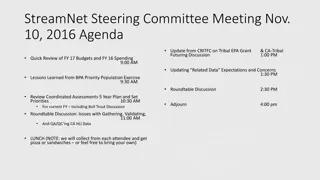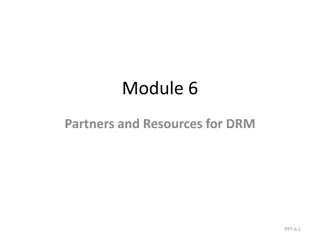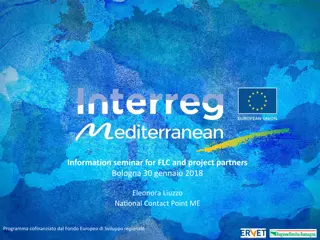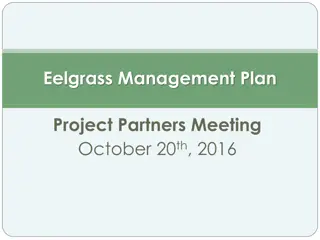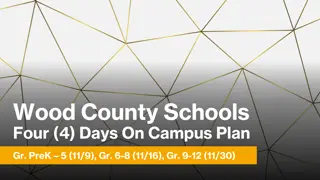Work Plan - India Partners Meeting November 20, 2014
This work plan outlines various activities and timelines related to partner meetings, research, dialogue sessions, and important meetings focusing on competition reforms in India. Key areas include impact assessment, stakeholder engagement, transportation sector analysis, and regulatory discussions. The plan aims to enhance understanding, drive advocacy efforts, and promote knowledge exchange among policymakers and stakeholders.
Download Presentation

Please find below an Image/Link to download the presentation.
The content on the website is provided AS IS for your information and personal use only. It may not be sold, licensed, or shared on other websites without obtaining consent from the author. Download presentation by click this link. If you encounter any issues during the download, it is possible that the publisher has removed the file from their server.
E N D
Presentation Transcript
1 Work Plan - India III PARTNERS MEETING November 20, 2014 Neha Tomar & Shreya Kaushik CUTS International
2 Work Plan Activity Types NRG IV Description Time line Activities vis-a-vis NAP Operational Approach 1 2 press coverage Intended Output/Outcome Jan Feb, 2015 Share work plan (Phase III) with NRG members Finalisation of the work plan and initiation of stakeholder dialogue Governments recognise the need for considering CREW findings Research & Dialogue s Pro/Anti competitive policies/practic es and their impacts on consumers and producers Jan May, 2015 Wheat - Quantifying impact of seed sector reforms on farmers in a district in Bihar - Firm up linkage of reforms & impacts from sec. & prim data - Analysing the impact of abolishment/ embracement of APMC - Undertaking extensive SH interactions to understand gaps/ good practices & take the work plan forward - Reviewing the operational structure of PACS
3 Contd. Activity Types Research & Dialogue s Description Time line Activities vis-a-vis NAP Operational Approach Intended Output/Outcome Pro/Anti competitive policies/practic es and their impacts on consumers and producers Jan May, 2015 Governments recognise the need for considering CREW findings Bus Transport - Impact of GSRTC (Gujarat) monopoly on other producers (entry barrier) - Interaction with senior civil servants/ govt, dpart. and private operators - Reviewing the legal structure of AMTS - Need for a State Public transport Regulator in MP - Evidence based note (CN) from CREW findings - Review of new intended policy regime - Comments on the draft Road Transport and Safety Bill
4 Contd. Activity Types Description Time line Activities vis-a-vis NAP Operational Approach Intended Output/Outcome Importan t Meetings Four rounds of Meetings with Parliamentarian s and Policymakers Jan May, 2015 Inter-state regulators meeting on good practices and regulations (one under each sector) - Platform for knowledge exchange of interstate policy makers Governments recognise the need for considering CREW findings Two government business fora - Identification of one-two reforms to advocate and pursue with policy makers
5 Contd. Activity Types NRG V Description Time line Activities vis-a-vis NAP Operational Approach 1-2 press coverage Intended Output/Outcome May June, 2015 Providing updates on progress of NAP and taking inputs Validation of the NAP s progress and outreach Public Informati on dissemin ation Media campaign to increase awareness & understanding about the impacts of competition reforms for consumers and producers Jan Aug, 2015 Based on the experience and outcomes of activities mentioned above - CREW calendar 2015 - Dialogue of project team with media personnel Greater visibility of CREW findings
6 Expected Impediments in NAP Application Both agriculture and bus transport are in the state list, hence the uptake of methodology in other states maybe a challenge Will to change outdated policies is limited Beaurucratic structure not only in decision making but in simple interaction as well Limited budgetary resources for project implementation
7 Khop Kun Kra!!!








